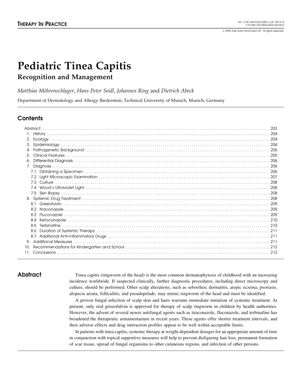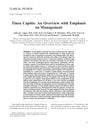Pediatric Tinea Capitis: Rising Incidence and Treatment
January 2005
in “
American journal of clinical dermatology
”

TLDR Children with scalp fungal infections need proper diagnosis and treatment, usually with antifungal medications, and newer drugs may offer quicker recovery.
The 2005 document details pediatric tinea capitis, a fungal scalp infection with a rising global incidence, highlighting the need for clinical suspicion and diagnostic confirmation through microscopy and culture. It notes that systemic treatment is essential, with oral griseofulvin being the only approved medication for children at that time, though newer antifungals like itraconazole, fluconazole, and terbinafine were available and offered benefits such as shorter treatment durations. The document also discusses the importance of differentiating tinea capitis from other scalp conditions, the history of treatment, and the necessity of two negative mycological cultures to confirm treatment success. It advocates for the approval of newer antifungals for pediatric use and notes that treated children may attend school. The authors disclose financial ties to pharmaceutical companies and assistance from Mrs. Marga Mittermaier in mycological preparations.

